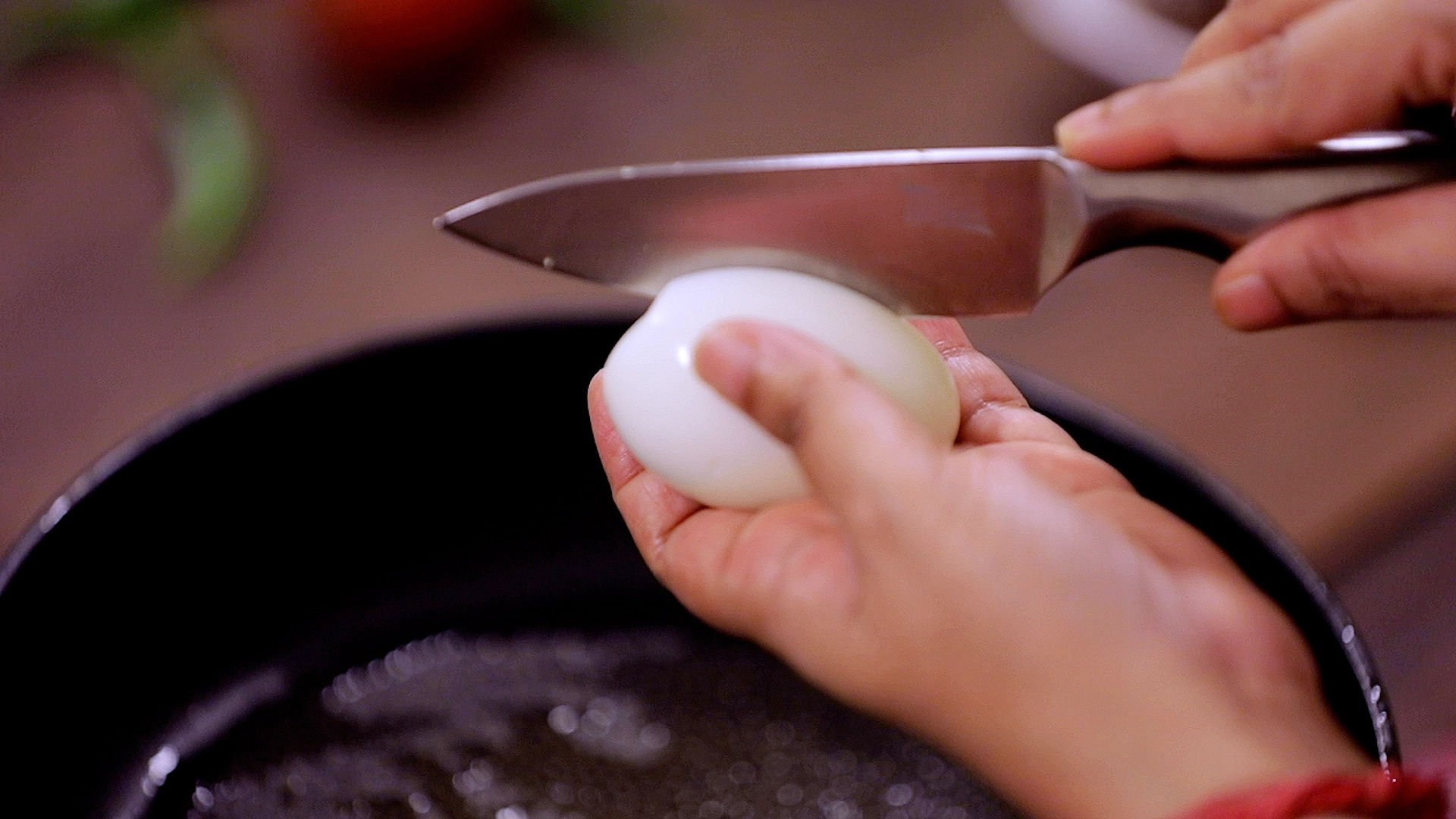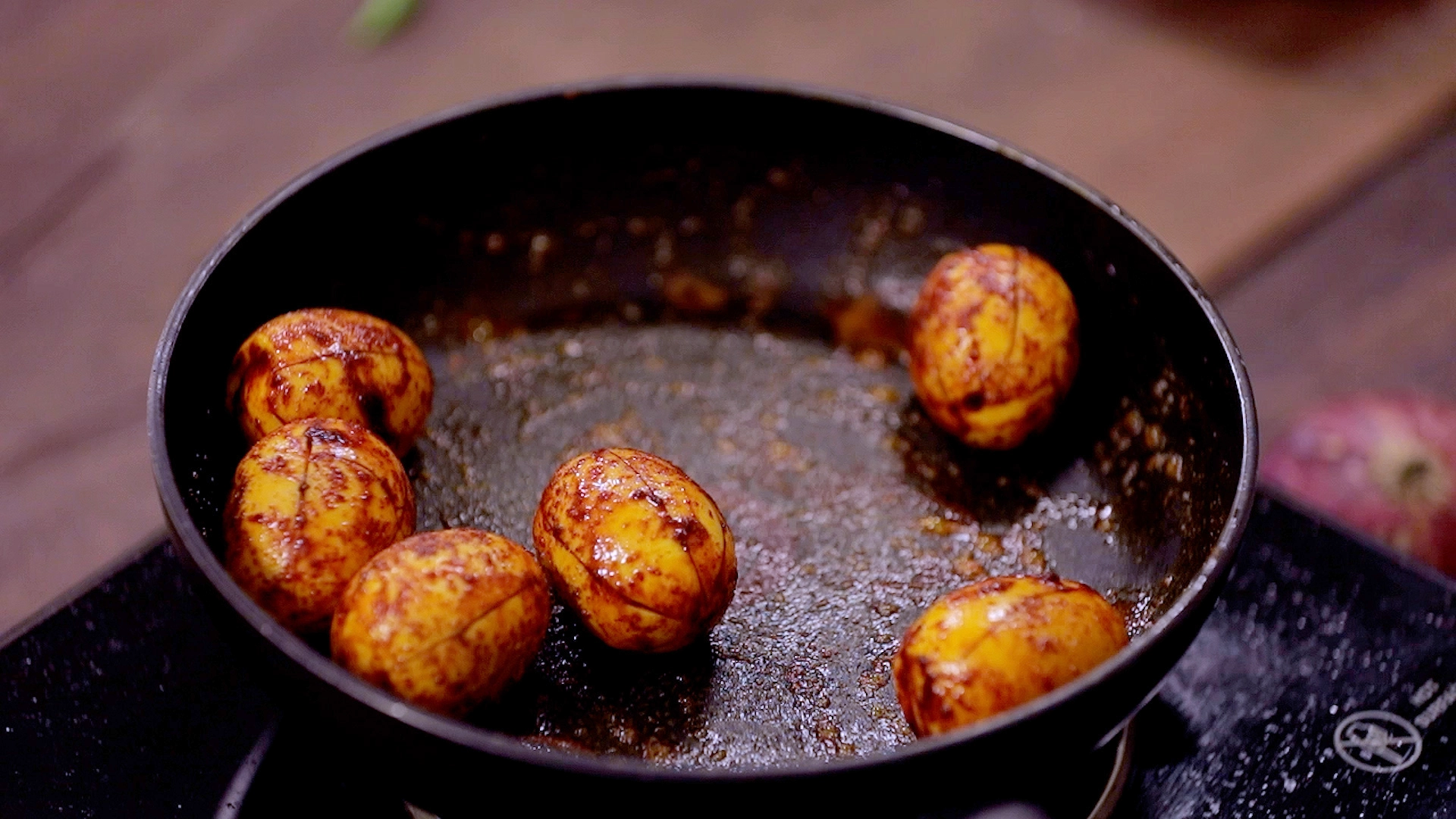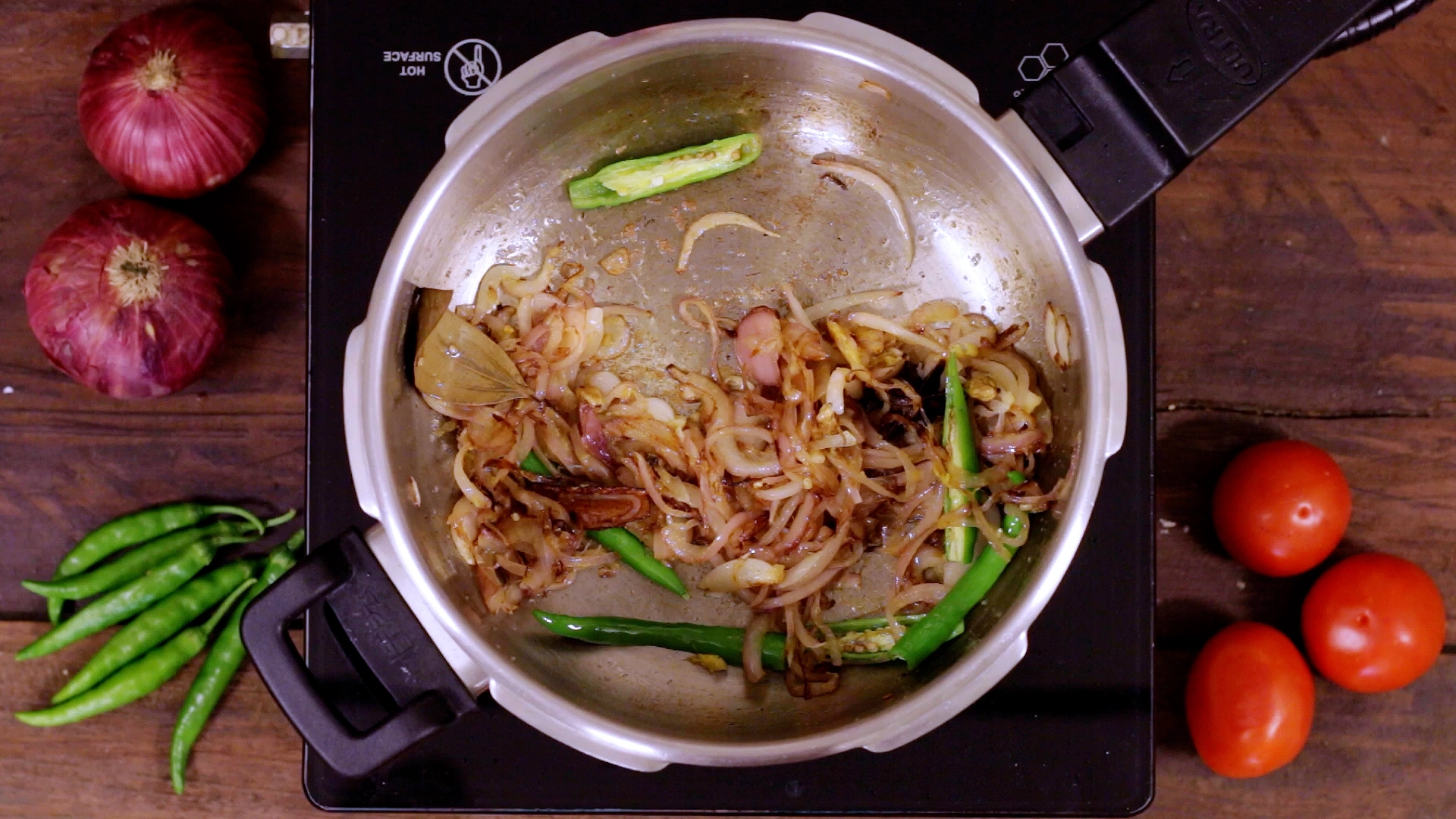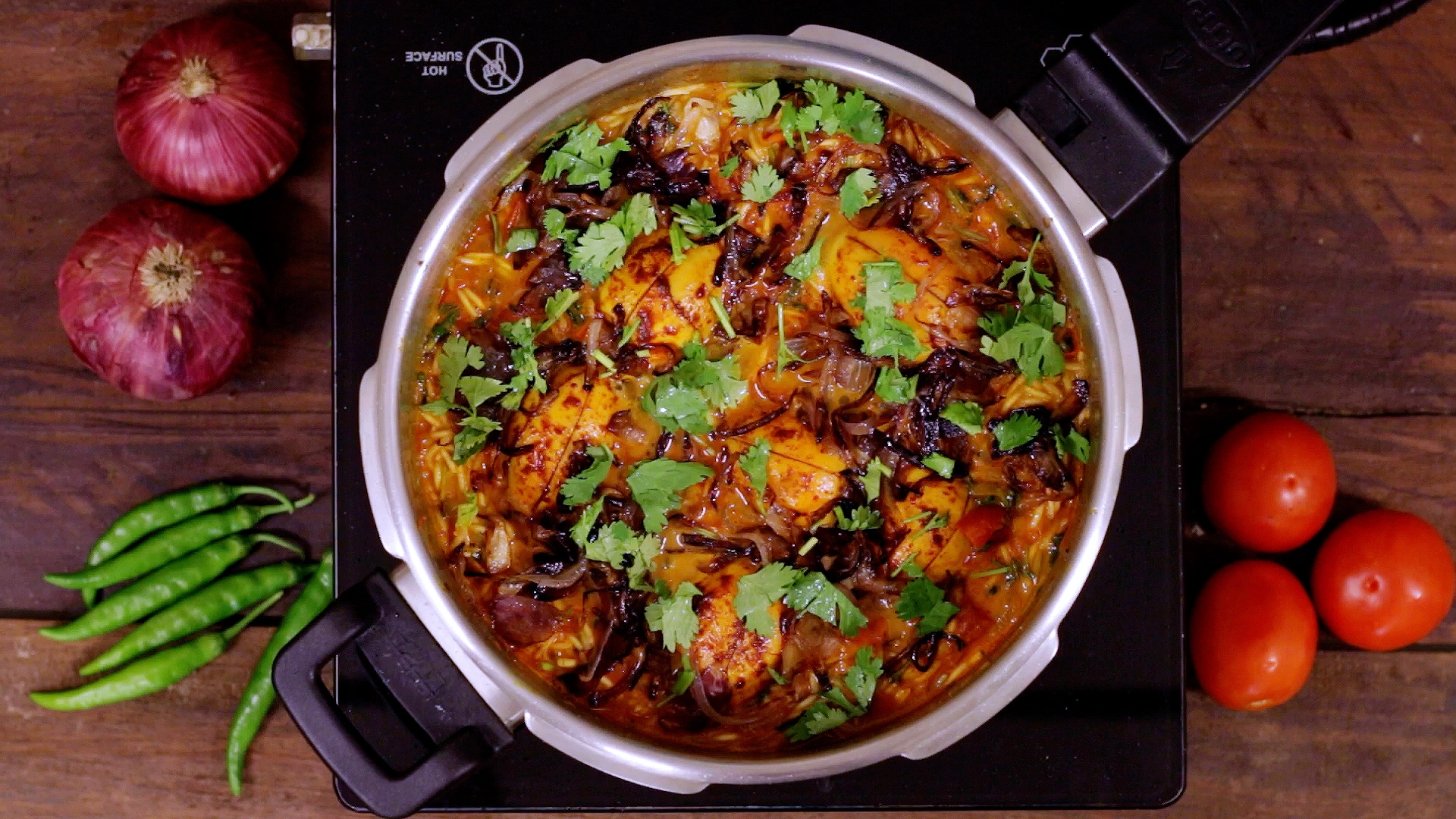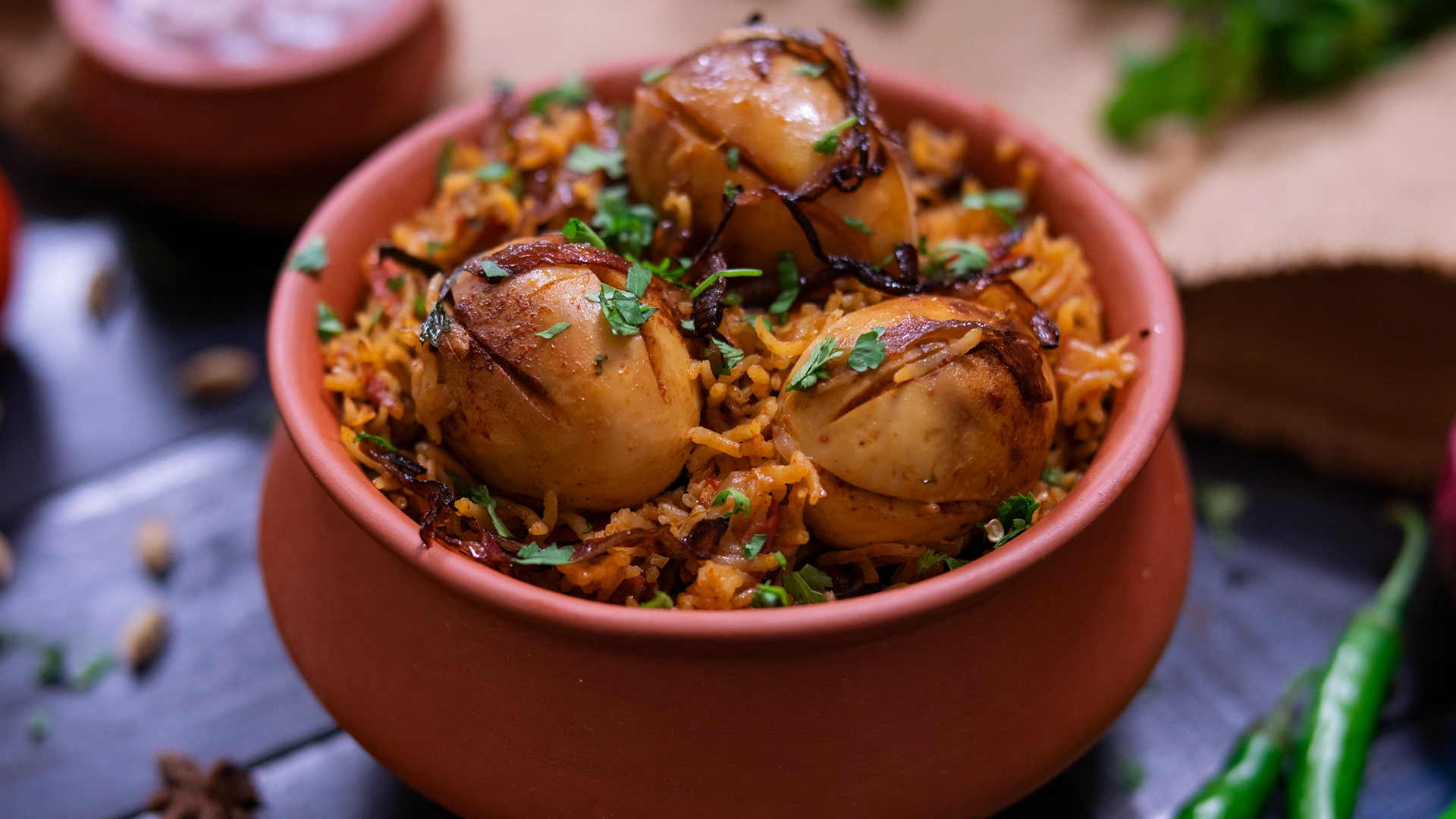Biryani is the kind of dish that instantly makes mouths water—it’s fragrant, rich, and bursting with deep, complex flavors. Whether it’s a grand weekend meal or a quick way to impress guests, Egg Biryani is a fantastic choice. It delivers all the indulgence of a classic biryani but comes together much faster, making it perfect when you don’t have meat on hand but still want something special.
With the pressure cooker method, you get the same depth of flavor in a fraction of the time, making this a fuss-free way to enjoy biryani even on busy days.
The boiled eggs soak up the beautifully spiced masala, giving each bite a delightful mix of textures and flavors.
Biryani in Indian Cuisine
Biryani has a special place in Indian cuisine. From the royal Hyderabadi Dum Biryani to the flavorful Kolkata-style Biryani, each region has its own spin. Egg Biryani is a simpler, quicker alternative, yet it holds its own with its bold flavors and aromatic spices. It’s the kind of dish that turns a regular meal into something memorable.
Ingredients That Make Egg Biryani Irresistible
Biryani’s magic lies in the perfect balance of aromatic spices, fresh herbs, and rich ingredients that create layers of flavor in every bite. Here’s how each ingredient contributes to making this dish so special
- Ghee & Oil – Ghee adds a deep, nutty richness, while oil ensures the spices fry evenly without burning, giving the biryani a balanced texture.
- Whole Spices (Cinnamon, Star Anise, Cardamom, Cloves, Bay Leaf) – These are the foundation of the biryani’s aroma. They release their essential oils when sautéed, infusing the dish with warmth, depth, and a subtly sweet, spicy fragrance.
- Onions – The secret to a flavorful biryani! Slow-cooked onions add a caramelized sweetness and richness, enhancing the base of the masala.
- Green Chilies – These bring a fresh, spicy kick that cuts through the richness and makes each bite vibrant.
- Ginger-Garlic Paste – Essential for depth, this adds a punch of bold, savory flavor while helping tenderize the eggs and enhance the biryani’s overall taste.
- Tomatoes– These break down into a tangy, slightly sweet base, thickening the masala and adding moisture that helps coat the rice grains perfectly.
- Salt – Enhances every ingredient’s natural flavors and ensures a well-balanced taste.
- Coriander & Mint Leaves – These fresh herbs brighten up the dish, adding bursts of fresh, citrusy, and slightly cooling flavors that balance the warmth of the spices.
- Basmati Rice– The star of the dish! Soaking the rice allows the grains to absorb moisture, ensuring they cook evenly while staying long and fluffy. Basmati’s signature aroma pairs beautifully with the rich masala.
Cooking Egg Biryani
Start by soaking basmati rice—it’s crucial for that perfect fluffy texture. Meanwhile, fry sliced onions in oil until they turn golden and crisp. These will be used both in the biryani and as a garnish later.
Next, take the boiled eggs, make small slits on them, and toss them in turmeric, chili powder, and salt. Quickly pan-fry them until slightly crisp on the edges. This step makes a huge difference—rather than just tossing plain eggs into the biryani, roasting them adds an extra layer of flavor.
Heat ghee and oil in a pressure cooker, then toast the whole spices. Once they release their aroma, add the sliced onions, sauté until golden, then add green chilies and ginger-garlic paste. The tomatoes go in next, cooking down until soft and jammy.
The spice mix is simple but powerful—curd whisked with red chili powder, coriander powder, turmeric, and garam masala. Pour it in, let it cook for a few minutes, and then layer in fresh coriander and mint.
Now, gently mix in the soaked rice, pour in water, and check for seasoning. Place the roasted eggs on top, cover with fried onions, and let it cook. A quick 10-minute pressure cook, followed by resting time, ensures the flavors meld beautifully.
💡 Pro Tip: Let the biryani rest for 10 minutes after cooking before opening the lid. This allows the rice to settle, preventing it from becoming mushy and ensuring each grain remains separate.
How to Serve & Pair Your Egg Biryani?
Egg Biryani is a complete meal on its own, but pairing it with the right sides makes it even better. Serve it hot with:
- Raita – A cooling yogurt side dish balances the spice.
- Onion Salad – Thinly sliced onions with lemon juice and chaat masala add crunch and freshness.
- Chicken 65 or Paneer Tikka – If you’re making this for a party, pairing it with a crispy appetizer elevates the meal.
Packing Egg Biryani for a Lunch Box
Egg Biryani makes a fantastic lunch box meal, staying flavorful and aromatic even after hours. To keep it fresh and enjoyable:
- Cool Before Packing – Let the biryani cool slightly before packing to prevent excess moisture buildup, which can make the rice mushy.
- Use an Insulated Lunch Box – This helps maintain the temperature and keeps the rice fluffy.
- Separate Raita or Gravy – If you’re packing raita or a side dish, store it in a separate airtight container to avoid leaks.
- Add a Salad – A simple cucumber or onion salad adds freshness and crunch, making the meal more balanced.
💡 Pro Tip: If reheating, sprinkle a few drops of water over the biryani before microwaving to retain its moisture and softness.
Preparing Egg Biryani for Parties & Potlucks
Egg Biryani is an excellent choice for gatherings because it’s easy to make in large batches and is always a crowd-pleaser. Here’s how to scale up and serve it perfectly
- Double or Triple the Recipe – Adjust quantities proportionally, but be mindful of spices—start with slightly less and adjust as needed.
- Use a Large Pressure Cooker or a Heavy-Bottomed Pot – This ensures even cooking without burning the rice.
- Fry the Eggs Last – To keep them golden and slightly crispy, roast them separately and add them just before serving.
- Garnish Just Before Serving – Top with crispy fried onions, chopped coriander, and a drizzle of ghee for extra aroma and flavor.
- Keep It Warm – Store in a hot case or warm oven (covered) until serving.
💡 Pro Tip: Serve with Chicken 65, raita, or a simple dal for a complete meal that your guests will love!
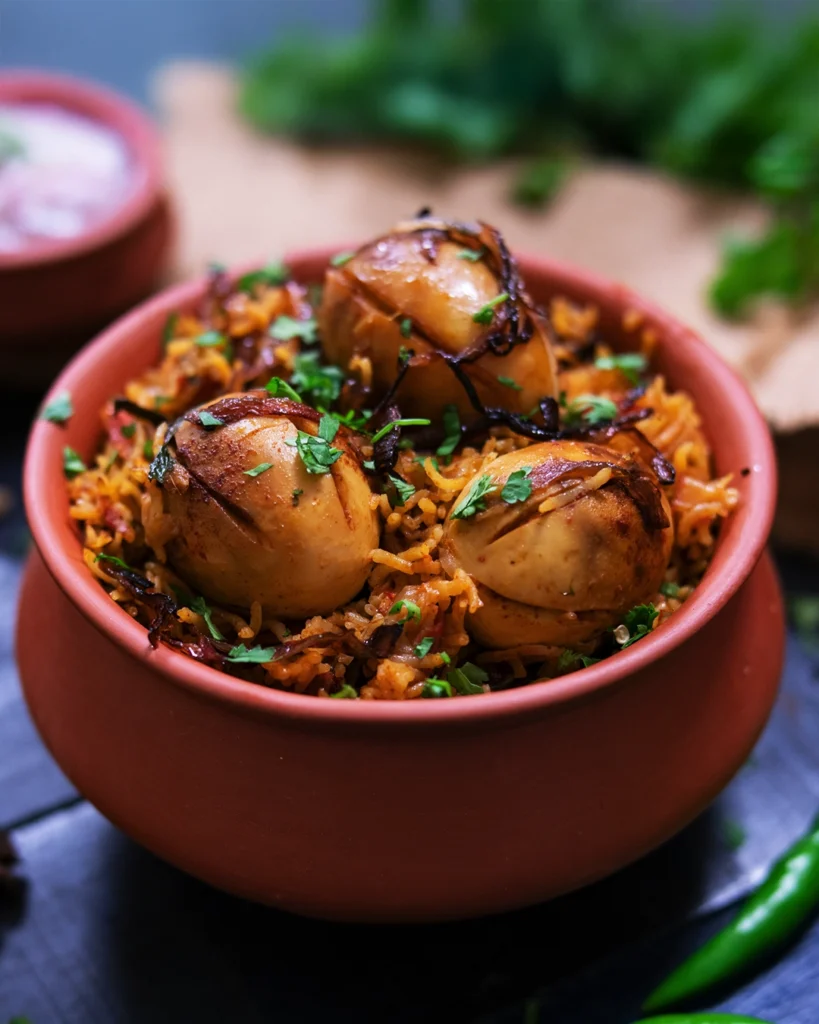
Egg Biryani
Description
Egg Biryani is a flavorful, one-pot dish with spiced rice and roasted eggs, made quickly in a pressure cooker. Perfect for lunch, dinner, or gatherings—serve hot with raita!
Ingredients
For browning the onions
For roasting the eggs
To make curd mixture
To make biryani
Instructions
Prep Work
-
Wash and soak the basmati rice for 30 minutes
-
Boil eggs, peel them, and make slits on the surface.
-
Thinly slice the onions for frying and cooking.
-
Finely chop the tomatoes for making the biryani base.
-
In a bowl, mix curd, chili powder, coriander powder, turmeric powder, and garam masala.
Method
-
Heat oil in a pan, fry onions until golden brown, and set aside.
-
In the same pan, heat oil, add turmeric, chili powder, salt, and eggs. Cook for 2 minutes. Fry until lightly crisp. Set aside.
-
In a pressure cooker, heat ghee and oil.
-
Add cinnamon, star anise, cardamom, cloves, and bay leaf. Sauté until fragrant.
-
Add sliced onions and cook until golden brown.
-
Add green chilies and ginger garlic paste. Sauté until the raw smell disappears.
-
Add chopped tomatoes and salt, cooking until soft and mushy.
-
Pour in the curd mixture and cook for a few minutes.
-
Add coriander leaves and mint leaves, stirring well.
-
Drain and add the soaked rice, gently mixing. Pour in water and check seasoning adjust if needed.
-
Place the eggs on top of the rice, then add fried onions and fresh coriander.
-
Close the lid, place the weight, and cook for 10 minutes on medium low flame. Turn off the heat and let it rest.
-
Open the lid after resting and serve hot with raita.
Nutrition Facts
Servings 5
- Amount Per Serving
- Calories 420kcal
- % Daily Value *
- Total Fat 12g19%
- Saturated Fat 4g20%
- Cholesterol 210mg70%
- Sodium 680mg29%
- Potassium 330mg10%
- Total Carbohydrate 55g19%
- Dietary Fiber 3g12%
- Sugars 4g
- Protein 14g29%
- Vitamin A 700 IU
- Calcium 90 mg
- Iron 3 mg
* Percent Daily Values are based on a 2,000 calorie diet. Your daily value may be higher or lower depending on your calorie needs.


